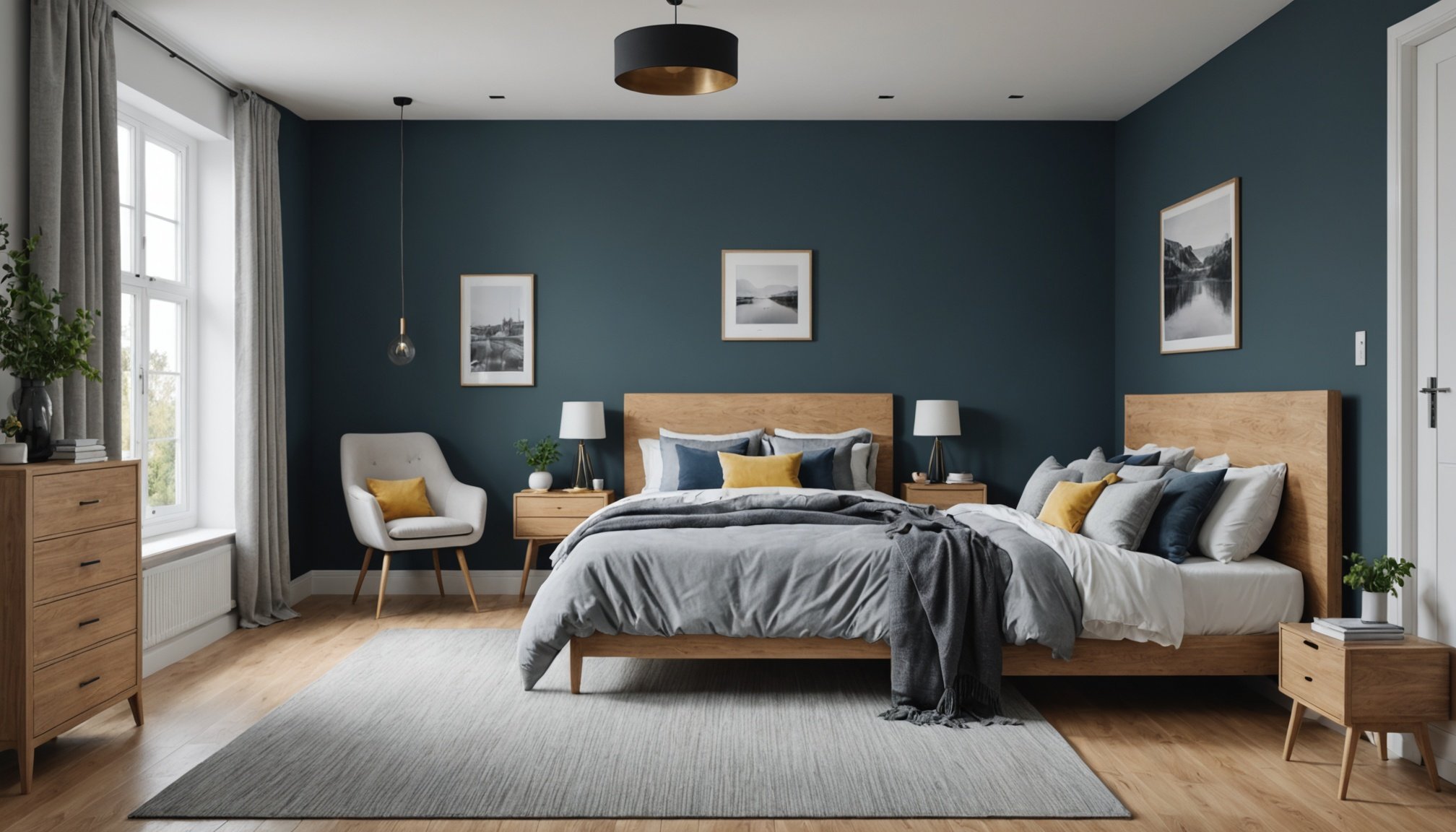Creating an inclusive guest bedroom goes beyond aesthetics; it embraces every visitor's unique experience. By thoughtfully considering diverse accessibility needs, you can foster a warm and welcoming space for all. From furniture selection to layout adjustments, each element can make a significant difference. This guide will explore practical design tips to help you transform your guest room into a haven that accommodates everyone, ensuring all your guests feel comfortable and valued during their stay.
Understanding Accessibility Needs
When designing guest bedrooms, considering accessibility is crucial to accommodate diverse guests. Accessibility needs vary widely, from wheelchair access to visual and auditory aids. Common requirements include wider doorways, lower light switches, and grab bars in bathrooms. These features ensure that guests with mobility challenges can navigate the space comfortably and safely.
Avez-vous vu cela : Crafting a Sun-Friendly Spice Garden: Balcony Gardening Tips for Limited Light in the UK
Inclusivity in design not only enhances the guest experience but also reflects a commitment to diversity. By incorporating accessible features, you create a welcoming environment for all visitors, regardless of their physical capabilities. This approach not only meets legal requirements but also fosters a sense of belonging and respect.
The impact of accessibility on the guest experience is profound. Accessible guest bedrooms allow individuals with disabilities to enjoy their stay without inconvenience or exclusion. This attention to detail can significantly enhance a guest's perception of their visit, leading to positive reviews and repeat business.
A découvrir également : Choosing the right wall light: from utility to decorative statements
Ultimately, prioritising accessibility in guest bedrooms demonstrates a dedication to providing a comfortable and inclusive environment for everyone. By understanding and addressing these needs, you ensure that all guests feel valued and respected during their stay.
Designing the Layout
Creating an accessible guest bedroom layout requires thoughtful planning and attention to detail. Open space design is essential for accommodating mobility aids such as wheelchairs or walkers. Ensuring there is ample room for manoeuvrability can greatly enhance a guest's comfort and independence.
To achieve this, consider implementing clear pathways that allow easy navigation throughout the room. Logical furniture arrangement plays a crucial role in maintaining these pathways. Position furniture in a way that does not obstruct movement, and ensure that essential items are within easy reach. This thoughtful arrangement not only aids mobility but also enhances the overall functionality of the space.
Another important aspect is the consideration of door widths and entry points. Wider doorways facilitate easier access for individuals using mobility aids. It's vital to ensure that entry points are unobstructed and door handles are easily operable. This attention to detail can make a significant difference in the guest experience, promoting independence and ease of use.
By focusing on these elements, you create a welcoming and accessible environment that caters to the diverse needs of all guests, ensuring a comfortable and inclusive stay.
Selecting Accessible Furniture
Choosing the right accessible furniture is essential for creating a comfortable and inclusive guest bedroom. Accessible furniture choices should prioritize features like height and adjustability to cater to various needs. For instance, adjustable bed frames allow guests to customize their sleeping position, enhancing comfort and accessibility. Beds with a lower height are easier for individuals with mobility challenges to get in and out of, promoting independence.
When selecting mattresses, consider options that offer both support and ease of movement. Memory foam or hybrid mattresses can provide the necessary support while being comfortable for a range of guests. It's also important to ensure that furniture is non-slip and easy to move. This can prevent accidents and allow guests to rearrange items as needed to suit their preferences or requirements.
Incorporating these elements in your accessible furniture choices not only meets the practical needs of guests but also enhances their overall experience. By selecting furniture that supports ease of use and safety, you create a space that is welcoming and accommodating for everyone. This thoughtful approach to furniture selection is a key aspect of designing an accessible guest bedroom.
Incorporating Accessibility Features
Incorporating accessibility features in guest bedroom design is essential for ensuring comfort and safety. One crucial element is the installation of grab bars and handrails. These features provide necessary support and stability, particularly in bathrooms and near beds, helping to prevent falls and assist guests with mobility challenges.
Another important consideration is the use of adjustable lighting and switches. Adjustable lighting allows guests to control the brightness according to their needs, which is particularly beneficial for those with visual impairments. Placing light switches at accessible heights ensures that all guests can easily reach them, promoting independence and convenience.
Additionally, the choice of non-reflective surfaces and textures plays a significant role in accessibility. Non-reflective surfaces reduce glare, which can be disorienting or uncomfortable for individuals with visual sensitivities. Textured surfaces provide tactile feedback, aiding those with limited vision in navigating the space confidently.
By thoughtfully integrating these accessibility features, you create a guest bedroom that caters to diverse needs. This approach not only enhances the guest experience but also demonstrates a commitment to inclusivity and respect for all visitors.
Addressing Sensory Sensitivities
Creating a sensory-friendly design in guest bedrooms is essential for guests with sensory sensitivities. One key aspect is the use of calming color palettes and textures. Soft, neutral tones can create a soothing atmosphere, reducing overstimulation and promoting relaxation. Incorporating gentle textures, like soft fabrics and smooth surfaces, can enhance comfort and provide a tactile sense of calm.
Soundproofing is another crucial element in a sensory-friendly design. Implementing soundproofing options, such as thick curtains or acoustic panels, can help create a peaceful environment by minimizing external noise. This is particularly beneficial for guests who may be sensitive to sounds, ensuring a restful and undisturbed stay.
Natural light and ventilation play a significant role in addressing sensory needs. Maximizing natural light through large windows or skylights can provide a gentle and inviting ambiance. Additionally, ensuring proper ventilation helps maintain a fresh and comfortable atmosphere. This approach not only enhances the sensory experience but also supports the overall well-being of guests.
By focusing on these sensory-friendly design elements, you can create a guest bedroom that accommodates a wide range of sensory preferences, ensuring a comfortable and inclusive environment for all visitors.
Resources and Tools for Implementation
When planning an accessible guest bedroom, having the right accessibility design resources is crucial. Various tools can assist in measuring and planning the layout effectively. Laser measuring tools are recommended for precise room dimensions, ensuring that pathways and doorways meet accessibility standards. Additionally, digital planning software can help visualise the space, allowing for adjustments before implementation.
For purchasing accessible products, several local UK resources offer a range of options. Companies specialising in accessibility products provide everything from adjustable furniture to non-slip flooring. These resources ensure that you can find items that meet both functional and aesthetic needs, supporting the creation of a cohesive design.
To ensure all accessibility needs are met, using comprehensive checklists is invaluable. These checklists cover essential elements such as door widths, lighting accessibility, and bathroom safety features. By systematically addressing each aspect, you can confidently create a space that accommodates diverse guest requirements.
Incorporating these resources and tools not only streamlines the design process but also enhances the overall quality and inclusivity of the guest bedroom.
Expert Insights and Case Studies
Exploring expert advice on accessible design offers valuable insights into creating inclusive guest bedrooms. Interviews with interior designers specialising in accessibility reveal that prioritising user-friendly features is crucial. Designers emphasise the importance of considering the diverse needs of guests, from mobility aids to sensory sensitivities.
Case studies of successfully designed guest bedrooms provide practical examples. One standout project involved a boutique hotel that transformed its guest rooms by incorporating wider doorways, adjustable beds, and non-slip surfaces. The result was a seamless blend of style and functionality, ensuring comfort for all guests.
Lessons learned and best practices from these real-life examples highlight key strategies. Designers recommend engaging with users during the planning phase to understand their specific needs. This collaborative approach ensures that the final design is both practical and welcoming. Additionally, ongoing feedback from guests helps refine and improve accessibility features over time.
By integrating these expert insights, you can create a guest bedroom that not only meets accessibility standards but also enhances the overall guest experience. This thoughtful approach underscores a commitment to inclusivity and excellence in design.











